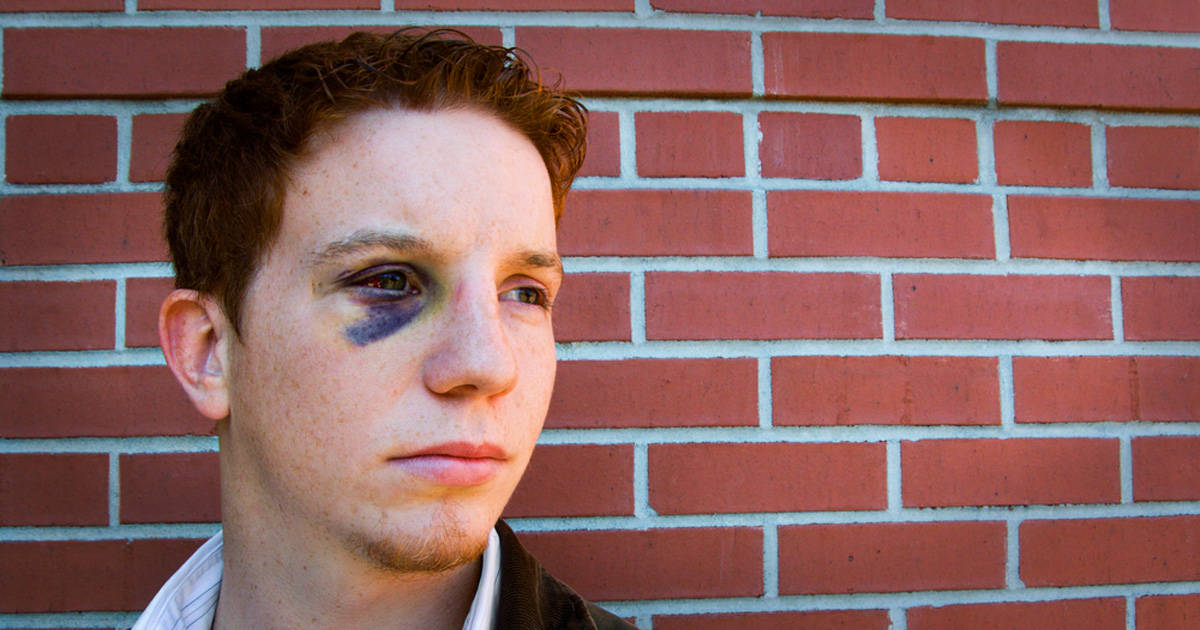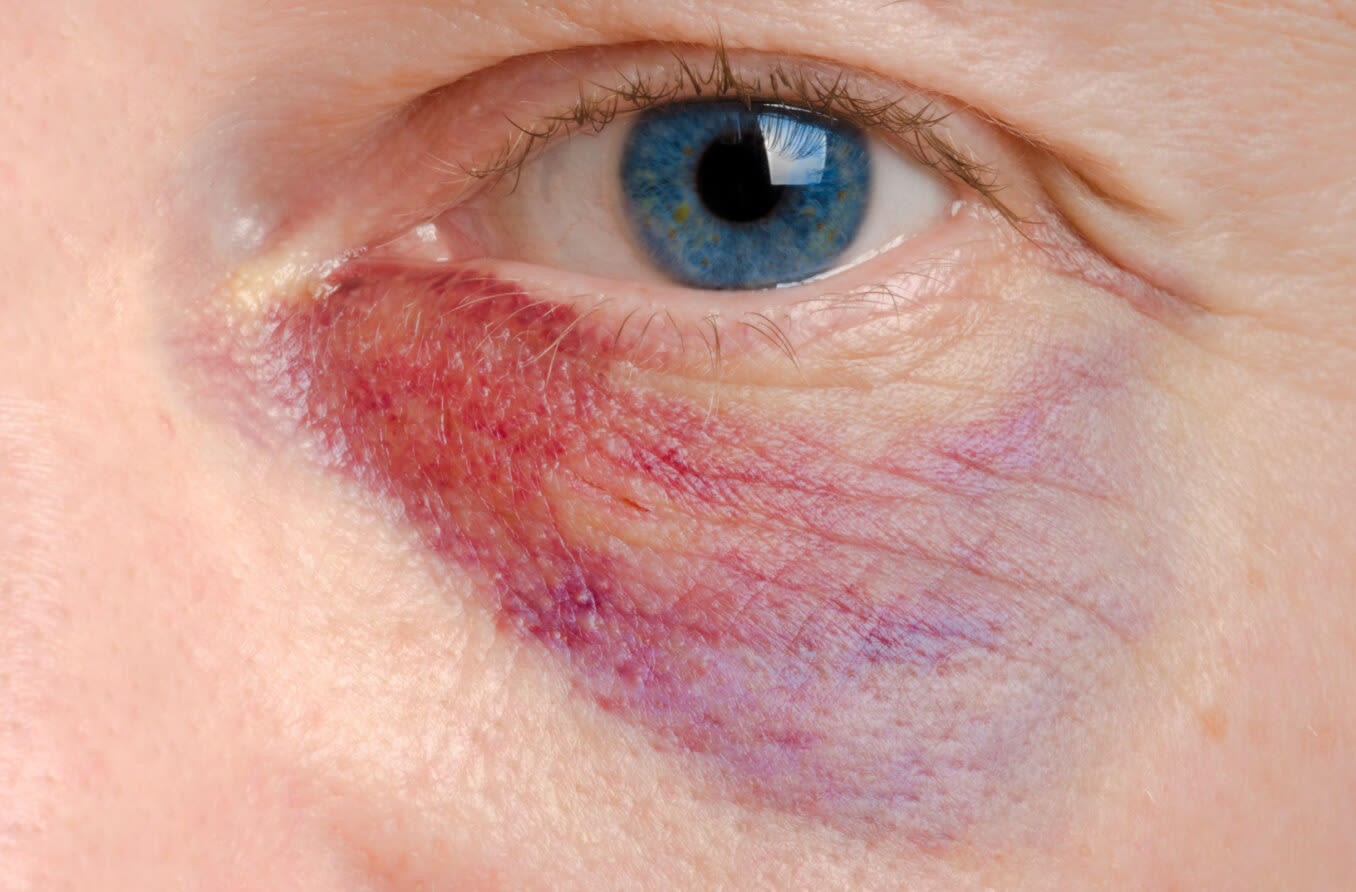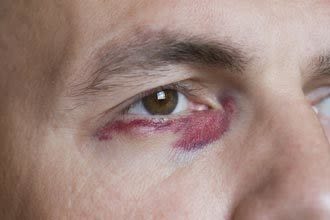Black eye treatment: How to get rid of a bruised eye

A “black eye” is the term used to describe the discolouration that occurs around an eye after a trauma to the eye or surrounding tissues.
Technically speaking, a black eye is a bruise caused by broken blood vessels under the surface of the skin. Like other bruises, a black eye typically is accompanied by swelling.
Similar to bruises elsewhere on the body, a black eye usually is caused by blunt force trauma — a non-penetrating injury caused by impact. But there can be other causes as well.
What is a black eye?
The clinical term for a black eye is periorbital hematoma. Though more difficult to pronounce, this medical term more accurately describes the condition — it is a collection of blood (hematoma) in tissues that surround the eye (periorbital).

A black eye can affect the area under the eye, or it can surround the eye completely.
Any blunt force trauma to the eye socket or areas around it can damage small blood vessels under the skin and cause them to leak, leading to the development of a black eye.
Because the facial skin around the eye socket is relatively thin and transparent, even a slight pooling of blood can result in a very noticeable discoloration. Also, since the tissue in this area is relatively loose, fluid leaking from blood vessels easily accumulates around the eye, resulting in a puffy black eye.
What causes a black eye?
Black eyes are usually the result of an accident in which an object strikes the area surrounding the eyes.
These accidents occur for countless reasons, from playing sports to simply walking into something.
Other common causes include cosmetic eye surgery, sinus infections and nasal surgery. Even dental work and tooth infections can sometimes cause a black eye.
A serious condition that can accompany a black eye is bleeding inside the eye, in the space between the back side of the cornea and the front of the iris. This is called a hyphema. Hyphemas are medical emergencies because they can cause rapid increased eye pressure and vision loss from glaucoma if left untreated.
Another condition often accompanying a black eye is a bright red appearance to the "white" of the eye (sclera). This is called a subconjunctival hemorrhage. Subconjunctival hemorrhages often look scary, but they usually are not serious and typically resolve without treatment within a couple weeks.
Black eye treatment
In most cases, a black eye is like any other bruise and is not a cause for extreme concern.
However, it is always important to have an optician examine a black eye before trying to treat it on your own.
To gauge the severity of a black eye, look for the following symptoms, and if any of them are present, seek immediate medical attention:
Blood inside the eye (hyphema)
Blood flow from the ears or nose
Dizziness, fainting or loss of consciousness
Changes in vision, including blurry vision, double vision or loss of vision
Appearance of flashes or floaters
Vomiting
Inability to move the eye
Behavioural changes or lethargy
Severe pain
Bruising around both eyes
Persistent headache
Signs of infection, such as warmth, redness, pus, or fever
Excessive swelling or swelling that is not attributable to an injury
To care for minor black eyes at home, apply a cold compress as soon as possible following the injury. A bag of frozen peas works better than ice cubes, because it conforms more easily to the face.
Another option is to chill a metal spoon in the refrigerator, then gently apply the back of the spoon to different parts of the bruised area.
Never apply raw meat on a black eye, since this can significantly increase the risk of infection.
Cold compresses can be applied for about 15 to 20 minutes at a time and can be reapplied every hour. This will help constrict blood vessels and limit the amount of swelling.
For minor pain, over-the-counter analgesics, such as parecetamol, may help. (Avoid aspirin, which is a blood thinner and therefore might make your black eye look worse.)
For a serious black eye, your optician may have additional treatment recommendations.
How to get rid of a black eye
A black eye usually will disappear within a couple weeks. During this healing period, it's important to protect the eye from further damage by avoiding any activities where additional injury could occur.
You likely will notice the colour of your black eye will change as it heals. Shades of purple, blue, and even green or yellow are not uncommon.
While there is no magic cure to get rid of a black eye overnight, here are a number of things that may help speed up the healing process so your eye can look and feel better faster:

A mild black eye may initially appear red, then darken and get more swollen with time. As a black eye begins to heal, it can turn purple, blue, green or even yellow.
Start with cold. Apply that bag of frozen peas, chilled spoon or some other method to lower the temperature of the area around the eye as soon as possible after the injury and frequently thereafter for the first 24 hours.
Switch to warm. After a day or two of applying cold packs, try gently applying warm (not hot) compresses to your black eye. This will increase blood flow to the area to facilitate healing.
Gently massage the area surrounding the bruise (not the black eye itself) in the days following the injury. This may help activate the lymphatic system near the bruise and speed up the healing process.
Snack on pineapple. This tropical fruit contains a mixture of enzymes that reduce inflammation and speed healing, which may help your shiner go away faster.
Vitamin C. Though vitamin C may do more to reduce how easily you bruise (by strengthening blood vessels, reducing their tendency to leak after blunt trauma), it also may help speed the healing of your black eye.
Bilberry extract. A relative of the blueberry and cranberry, blueberry contains potent antioxidants that may help reduce or eliminate bruising by increasing the effectiveness of vitamin C and strengthening capillaries.
In most cases, you will see noticeable improvement in the appearance of your black eye within a week.
How to prevent black eyes
To decrease your risk of getting a black eye, always remember to wear safety glasses, sports eyewear or even protective headgear that includes a face shield when you are involved in potentially hazardous activities, including playing sports.
Wearing a seat belt also is essential, legal requirement and significantly reduces the risk of black eyes from even minor vehicle accidents.
In addition, there are steps you can take around the house to prevent getting a black eye. For example, don't leave objects on the stairs, since this can easily result in a fall and eye injury. Area rugs also can be a trip hazard, so make sure they lie flat and are wrinkle-free. FIND AN OPTICIAN OR OPTICAL SHOP NEAR YOU: Our locator lists nearby opticians and optical shops to make booking appointments easy.
Page published on Tuesday, 25 June 2019






